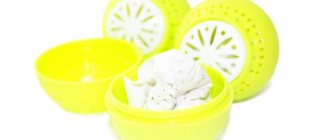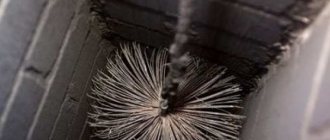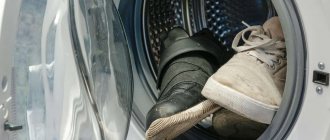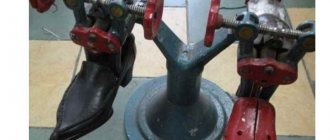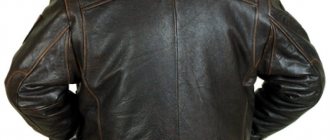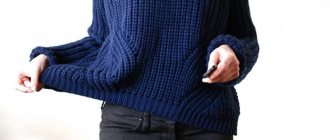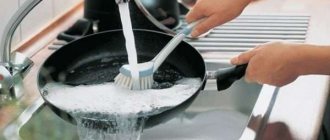As you know, autumn is just around the corner. On the eve of the new season, it is worth checking your clothes and shoes and making sure that your wardrobe is completely ready for use. What to do if it suddenly turns out that a large scratch “decorates” a beautiful leather jacket in the most visible place? Or, for example, did a new shoe have a hole from somewhere, which, naturally, does not decorate it at all? Sometimes varnish or cream helps correct the situation, but there are times when only thin skin can cope with the problem. If you wish, it is easy to make this material yourself. How to repair the damaged surface of a leather product yourself? We'll talk about this in our article.
What is “Liquid Skin”
Liquid leather is a composition that can paint over and eliminate minor defects in a product. The substance fills the damaged area, restoring its original appearance.
Upgrading car seats
The easiest way to repair a scratch on a leather product is to use acetone. Drops of solvent are applied with a regular medical pipette to a shallow cut. Use a small spatula to scrape off the dissolved paint and cover the scratch. Through cuts are eliminated using special glue and backing.
The restored area is covered with liquid skin, which is easily absorbed. When the composition dries completely, the damage becomes invisible. A color-matched dye or a mixture of shades can restore the product to its original appearance.
The product is produced for repairing leather products, but minor defects can also be corrected on vinyl or leatherette. The composition resembles a thick polymer cream. In case of more serious damage to the backing, painting with liquid leather is done after the glue has completely dried.
Painting shoes
What to do if your eco-leather jacket is cracked?
Has your favorite jacket lost its former shine, and has scuffs, creases and other damage appeared on the surface? How to restore a leather jacket - let's take a closer look at your next steps:
- Assess the extent of damage. This must be done first of all so that you understand what kind of repair the product needs and how much time it will take. First of all, you need to inspect the jacket; if there is severe damage on its surface, then to restore it you need to use deep dyeing products, and the repair process itself will be painstaking and long.
Important! Small scratches on artificial leather should be removed immediately after they are identified. This must be done to further preserve the item and protect it from more serious damage to the material.
- Do the repairs yourself. It is advisable to do such actions only in case of minor defects on eco-leather. If you decide to restore severely damaged leatherette on your own, then you risk damaging the product.
- Use the services of qualified specialists. The best way out of this situation is to contact a professional. This is due to the fact that working with natural and artificial materials requires special care, skills and adherence to restoration technologies.
Composition of the “Liquid Skin” product
Industrially, liquid leather compositions are made from alcohol, water and polymer dyes. The applied mixture is absorbed, filling the damaged area of the leather product, after which it must air dry. The solution is not a glue, but only a coloring agent.
You might be interested in this Features of Kviv Avto eco-leather for car interiors
Note! Some mixtures may contain an adhesive base and rubber resin, which form an elastic consistency. Making a similar liquid yourself is possible using acrylic artistic paints.
Scuff Repair
Tape or sew, which is better
As a rule, they resort to sealing leather jackets. But sometimes it will be better to sew or darn. This process is advisable if you have a sewing machine at home and the ability to sew on it.
There is no way to sew it beautifully with your hands and a needle. It happens that a piece of leather is missing. In this case, a patch is placed: a suitable piece of leather is taken, and a piece of fabric of the same size is taken. A fabric one is applied to the inside of the tear (to do this, the lining along the seam is torn off), and leather to the outside. Their dimensions must exceed the dimensions of the hole. After application, stitch. If there is excess material sticking out, carefully trim along the line.
Product benefits
Many problems can be solved using such a composition. For example:
- extend the service life of the worn surface of the product;
- eliminate minor damage, scratches and frayed edges;
- needle punctures and glued pieces of skin can be disguised with liquid skin;
- radically change the color of the product;
- restore seriously damaged leather surface;
- change the surface texture by applying putty and liquid leather composition;
- save money to buy new products to replace old ones that have lost their appearance.
Important! You can do minor repairs to shoes or leather goods yourself.
It’s easy to touch up scratched heels or knocked-off toes of shoes at home. You can’t take a leather sofa scratched by a cat to the workshop, and calling a specialist to your home can be unreasonably expensive. It’s a different matter if you do the restoration yourself.
Sofa restoration
Step-by-step instructions for use
The best way to deal with cuts is not glue, but liquid putty.
Repairing leather furniture with your own hands is not a labor-intensive process, but quite responsible. Below are detailed instructions on how to repair a leather sofa.
Instructions for using liquid leather for cuts on furniture
- First of all, it is necessary to clean the damaged area from broken fibers and bring the edges of the crack or tear closer together. To achieve the best result, the crack can be pinpointed in several places, and the hole can be pre-glued from the inside.
Damage to upholstered furniture made of light leather
- Using detergent, degrease the surface of the leather sofa and dry thoroughly.
We wash a leather sofa before carrying out restoration
- Choose the appropriate “liquid skin” color. If you need to choose a complex color scheme, then the set comes with a special table of colors and shades. With its help, you can determine the color scheme that needs to be mixed to obtain the desired shade.
If the cut is deep, you need to glue the inside or make a patch
Table for selecting colors of liquid leather for the product
- Apply the mixture to the prepared area of the leather sofa. This can be done with a paint brush or a piece of foam rubber.
Applying liquid skin with a spatula to damaged areas
- Level the layer of product applied to the damaged surface of leather furniture. If you don’t have a spatula, you can do this at home using a ruler or an unnecessary plastic card.
The upholstery looks better after applying the second coat.
- Avoid any contact with the restored area until the mixture has completely dried.
Helpful advice. In order to give the repaired area a porous pattern that matches the entire surface of the leather sofa, you need to attach a piece of leather (artificial or natural) of the appropriate texture to the treated surface and press firmly for a few seconds.
If you don’t have a piece of skin, you can create your own template using an ordinary paper napkin. To do this, a layer of the mixture is applied to it, and the napkin is applied to the undamaged area, where the relief is especially clearly visible. After this, the resulting template must be thoroughly dried. It is used in the same way as in the first option.
The result of using liquid skin with before and after photos
There are cases when, when restoring leather furniture, the result obtained does not meet expectations. This is mainly due to the following reasons:
- the leather sofa has a large defect area;
- incorrect skin tone;
- ignoring the recommendations set out in the instructions for use of the product;
- the pattern of the piece of leather used to make the print does not match the overall texture of the surface of the leather sofa.
The result of the correctly selected color of liquid leather for repair
DIY “Liquid Skin”
If the required shade of the paint composition is not available, it is possible to prepare the “Liquid Skin” product yourself.
For production you will need:
- acetone solvent;
- regular pipette;
- a piece of leather of similar quality and texture;
- knife and small spatula.
The liquid type of material can be easily prepared with your own hands from the same material that needs to be restored. Acetone dissolves the material in the selected area. The scraped off particles are transferred to scratches or worn areas and rubbed into the surface of the product with a spatula. The area cleared of excess particles is dried and painted with a color-matched composition.
Bag with full surface restoration
The best mixtures for repairing furniture and shoes
Many shoe cosmetics manufacturers supply liquid leather to the market. Their products differ little in composition and quality characteristics, the only difference is in packaging and price. Here are the most famous brands:
- Products from a domestic manufacturer. Available in individual bottles or sets of seven colors. Price – 550–1000 rub.
- Saphir Creme Renovatrice. The French product is characterized by durability and increased paint resistance. A tube of 25 ml can be purchased for 530 rubles.
- Liquid leather. The products of the Russian manufacturer are sold in 125 ml bottles, the price is 600–650 rubles.
How to use liquid skin
Dried paint does not cause any harm to humans, but some precautions exist:
- It is preferable to work with medical gloves;
- protect your eyes from contact with the product;
- do not allow the undried product to touch any skin;
- the product is poisonous and dangerous;
- keep jars with the composition in a place inaccessible to children and animals;
- if the product gets on the body, rinse the affected area thoroughly under running water;
- should be used with caution for artificial fabrics imitating leather.
You may be interested in How to choose upholstery fabric for upholstered furniture
There is no need for special skills or experience to paint damaged areas of the product. The degreased surface is simply painted and dried well.
If it is not possible to select a material to seal a cut or scratch, then use an inconspicuous part of the product. Apply a few drops of acetone to the lapel of a jacket or boot to dissolve the leather. Quickly scrape off the material and apply it in the required place, rubbing it in with a spatula. The dried surface is polished with a soft cloth, then the desired color is applied.
Note! The painted surface acquires the qualities of a leather product after complete drying. The manufacturer indicates in the instructions how to use liquid leather correctly.
Repair using adhesive
How to glue holes correctly
It is possible to repair a hole in a leather jacket using glue. However, during such a restorative manipulation, it is necessary to be careful and careful so that no traces of the adhesive composition remain outside the working area. In addition to focusing on the process, you also need to follow the correct algorithm. There are certain rules, deviation from which when sealing a jacket can lead to damage to the product.
For reference!
It is recommended to use glue for leather products. This product has a specific composition, which is specially designed to suit the characteristics of leather products.
Before you begin restoring a leather item, you need to make sure that all the necessary consumables and tools are at hand. Since some types of adhesive compositions harden in a short period of time, there may be no opportunity to stop the gluing process and find what you need, and the product will have to be cleaned of glue and the whole job will have to start all over again. The gluing procedure involves the following steps:
- Using tweezers, the torn flap is fixed with tape in its original position.
- The product is turned inside out so that it is possible to get to the place of damage. When you can’t get to the material from the wrong side - the sewn lining is in the way, you need to rip it apart - carefully and along the seam.
- The product is placed on the table and the work area is degreased.
- A patch is applied to the site of damage and the torn flap is glued onto it.
- While the adhesive has not yet hardened, it is possible to adjust the position of the flap so that the damaged area becomes less noticeable.
- Carefully turn the jacket inside out and peel off the tape from the outside.
- The adhesive composition must dry under pressure - press the gluing area with your hands until it hardens, or use heavy objects at hand as a load.
After the glue has completely hardened, the lining is carefully sewn up, making sure that the entire seam is solid and there are no threads sticking out. After restoring the lining, check the strength of the seam - look at it along its length. You need to make sure that the thread is fixed at the end of the sewn area - the knot is large enough and will not loosen over time. After checking the quality of the work performed, the repaired product is again wearable.
How to glue with Moment glue
Sometimes, when a flap has been completely torn out of an item, and not just a tear has occurred, more serious measures are taken to restore the original appearance of the clothing. You can seal a leather jacket with your own hands using Moment glue. This product is characterized by increased adhesion and is not water soluble. For gluing you will need the following materials and tools:
- shoe glue "Moment"
- material for the patch – suede or leather.
- art brush;
- scissors;
- toothpicks;
- paint for leather products;
- degreaser;
- hammer or other heavy object.
Attention!
It is better to choose rubber “Moment”, since its elasticity is higher, and other varieties become hard after drying.
Before starting to seal, in the torn area, you need to carefully tear apart the lining - if there is one. Afterwards, the prepared leather or suede patch is glued to the torn area on the wrong side. After the patch has been positioned correctly and correction is no longer needed, a heavy object is placed on the sealed area and the item made of natural material is left until the adhesive composition dries.
Repairing significant damage
To restore leather products damaged by a cut or tear of the material, it is necessary to use a backing made of fabric, gauze or a piece of leather. It all depends on the thickness of the leather product and the shape of the damaged area.
The cleaned area is degreased with alcohol, a piece of leather is glued on, straightened from the inside. After the glue has completely dried, clean the damaged area with a soft sponge. If a section of the surface is missing, you can use a manufactured stencil and, after applying putty, transfer the textured pattern using the imprint method. After the area to be restored has dried, you can begin painting the product.
Professional set for leather restoration
Gasoline or turpentine
With this method you can easily and quickly remove even the most stubborn stains. Alcohol can penetrate deep into eco-leather, which will visually mask all the flaws of the damaged surface. To apply alcohol or turpentine, you need to use a small piece of gauze to apply the product to the damaged material for 15 minutes. After complete drying, the skin will become one solid piece, and defects will be almost invisible.
Important! The most important thing here is to adhere to one rule: do not leave a strong substance on the leatherette for a long time, as it can wash off the paint applied during the production of the product.
Special dyes for artificial and natural leather
This is an excellent solution for getting rid of weak and strong defects in the surface of leatherette. The coloring pigment penetrates deeply into the structure of the material, which allows you to completely eliminate the defect and give the product an attractive appearance.
The most important advantage of this method is the rich palette of colors and shades - from standard leather options to acidic ones.
Important! To consolidate the result, we recommend covering the paint with a finishing layer using leather varnish.
How to make a pattern if the surface was not perfectly smooth, but had a pattern
A napkin soaked in an adhesive solution is applied to the undamaged area of the surface, which, after drying, will preserve the shaped surface of the product. This stencil can be briefly applied to the surface of the wet putty to obtain an impression. The textured front side has now been restored using a template and a layer of coloring composition can now be applied.
Complete restoration of a handbag
How to eliminate defects on the skin?
They work like this:
- First, remove all particles of glue.
- Degrease the problem area with alcohol or any other special liquid.
- Then the first layer of “liquid skin” is applied to the entire damaged area. Without waiting for it to dry, remove excess product with a sponge.
- After 10-15 minutes, the procedure is repeated again. If necessary, you can use a third layer.
- The treated area is then completely dried.
If everything is done carefully, no one will be able to detect traces of past damage on the surface of your clothes or shoes.
Repairing leather from a burnt cigarette
The simplest way to restore a surface damaged by a cigarette butt is to clean the face layer to eliminate unevenness. The putty is applied several times, allowing each layer to dry. Apply the final layer and remove excess composition with a soft material. The recipe for restoring the original appearance of a product is quite simple and accessible.
You might be interested in what bedding is made from and what fabric is better to choose
Minor jacket repairs
The old method, used by people for many decades, does not lose relevance to this day. Knocked shoe socks or scratches on the sofa, a worn-out jacket or a favorite handbag that has lost its appearance can be repaired and updated with your own hands.
https://www.youtube.com/watch?v=2h4nMrvDAo8
Step-by-step job description
You may have noticed that the materials list doesn't mention liquid leather ingredients. This is not surprising, because we will make a product for repairing a leather product from the product itself, or rather, from its outer covering. The “donor” for restoration of the damaged area will be a small piece of material that is located in an inconspicuous place. For example, if you need to cover up a scuff on the toe of a shoe, look at the insole, the inside of the tongue, and the lining under the zipper to find a suitable place.
When the “donor” has been found, it’s time to begin the main part of the work.
To get liquid leather and return the product to its original appearance, proceed as follows:
- Pipette a little solvent and drop it onto the site that will be the “donor”. Leave the liquid for a few minutes so that it has time to soften the paint layer.
- Meanwhile, moisten a rag with alcohol and thoroughly wipe the damaged area with it, removing all dust, grease and other contaminants.
- Take a utility knife and, with the front of it, carefully remove the top layer of skin from the area treated with solvent. It will be soft and pasty, so you won't need much effort.
- Without hesitating for a minute, apply your homemade liquid skin to the damaged area and spread evenly. If there is not enough money, repeat the procedure described in steps 1–3.
- Leave the product to dry.

